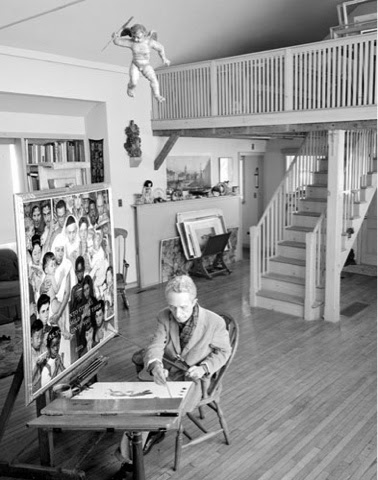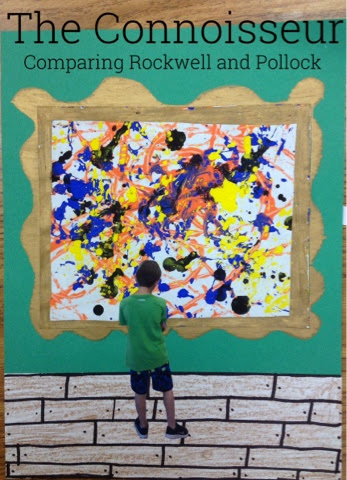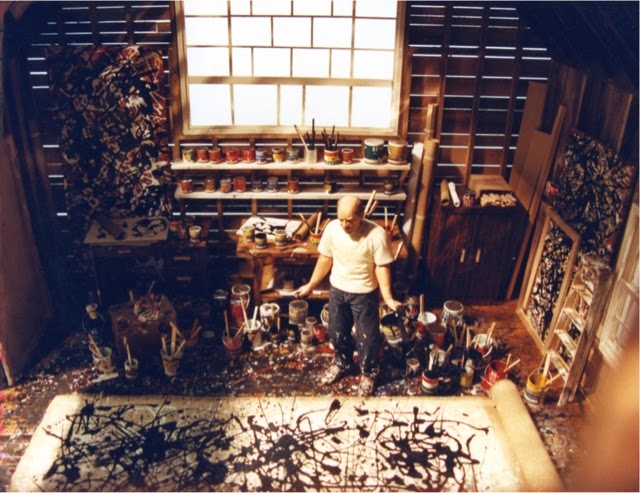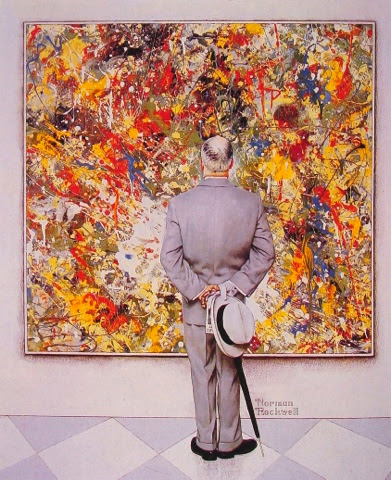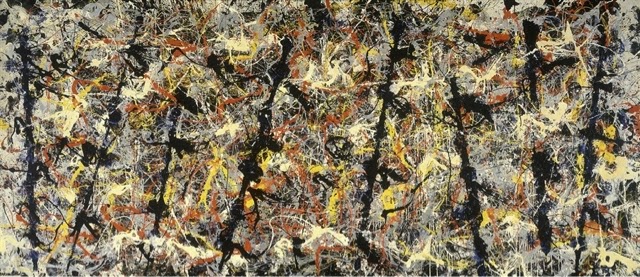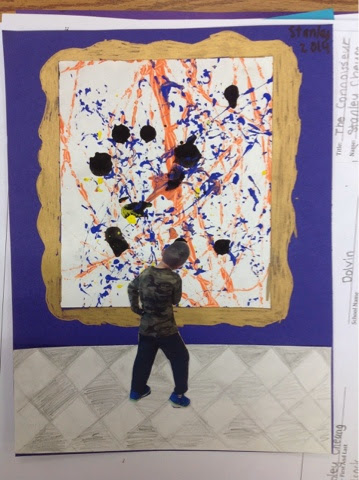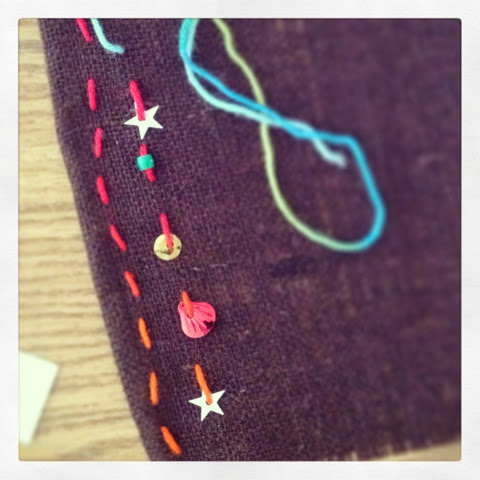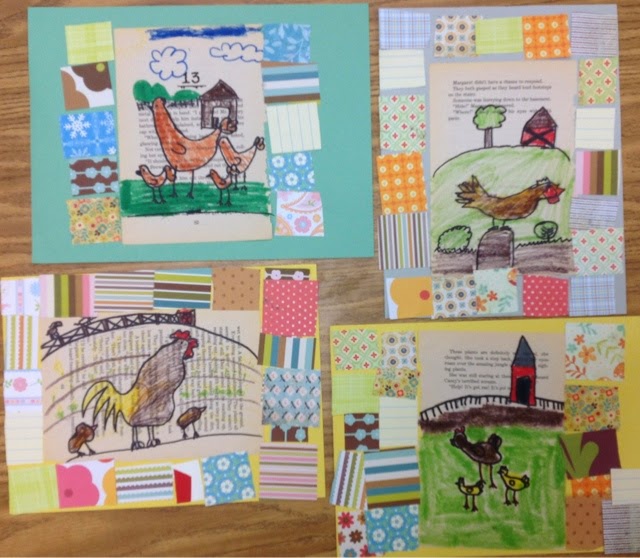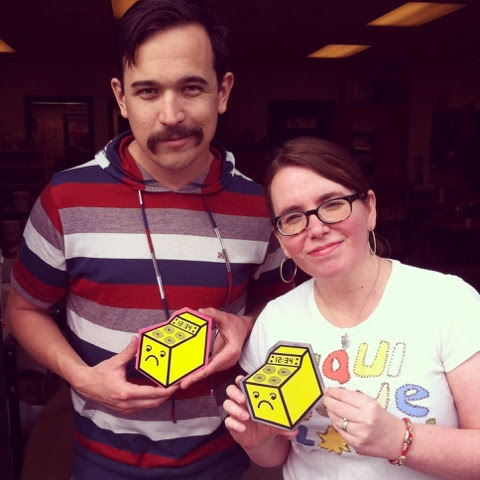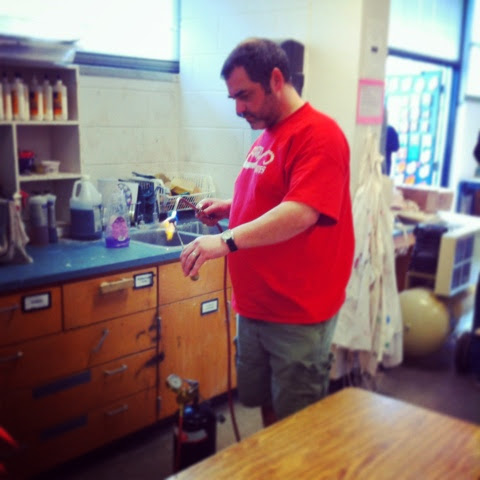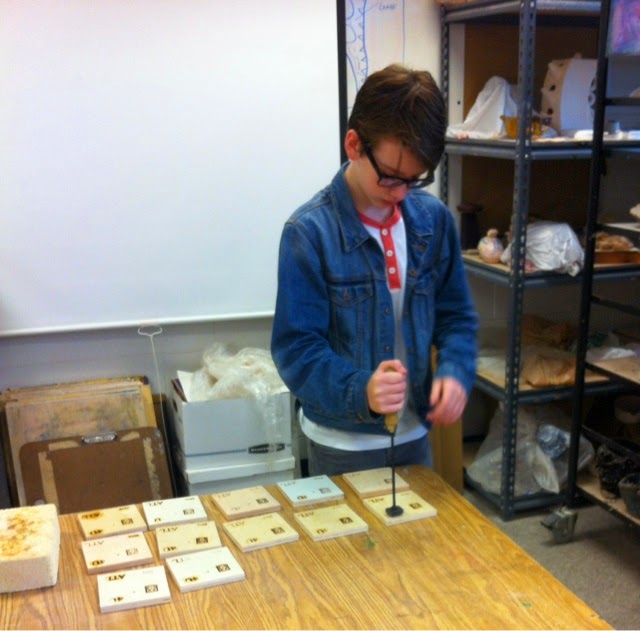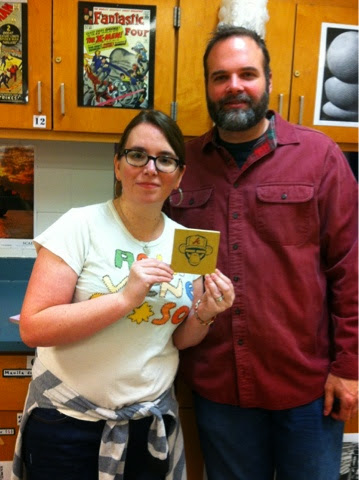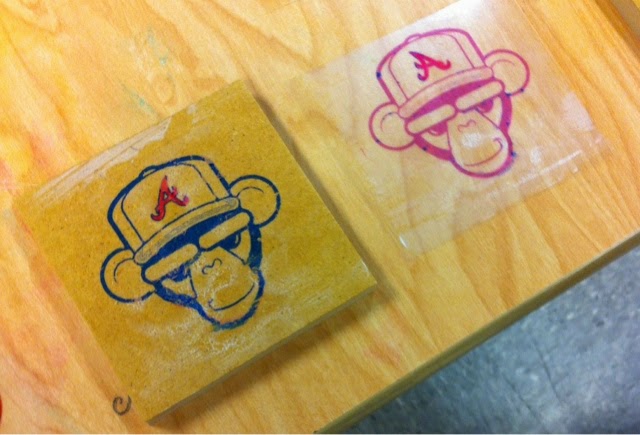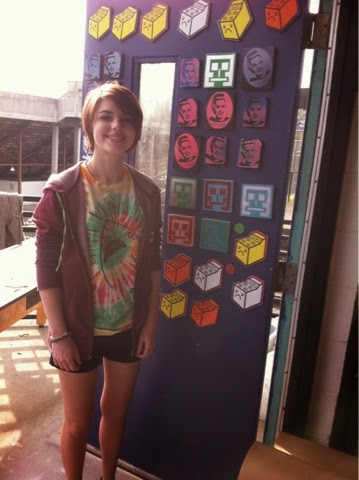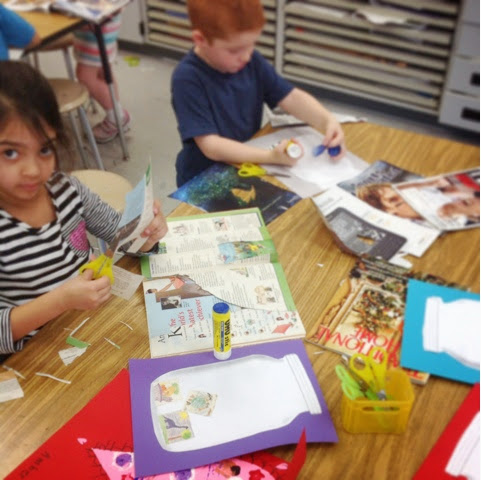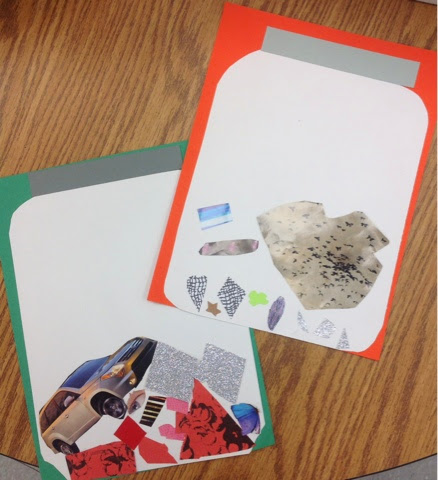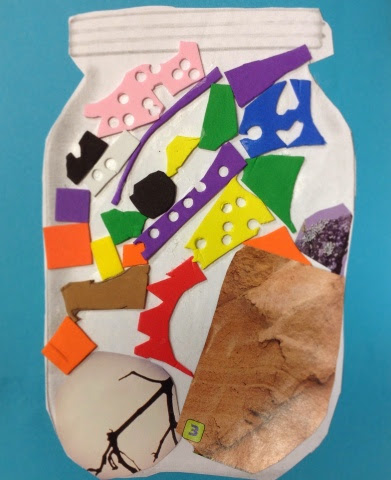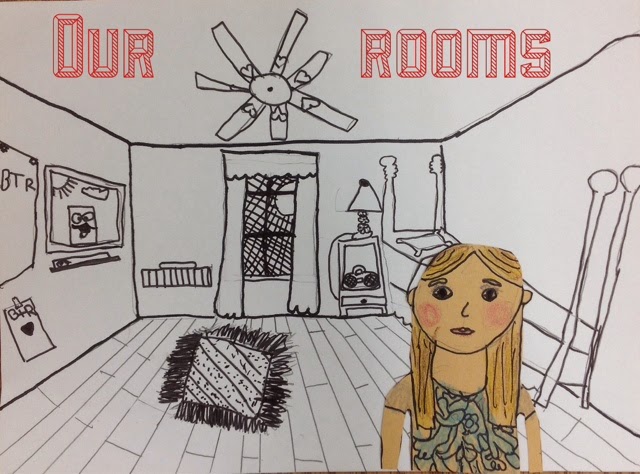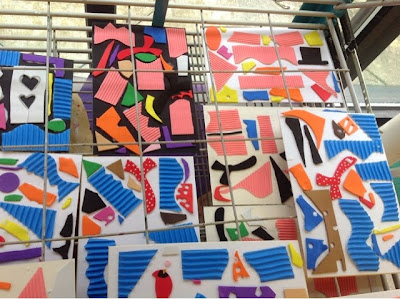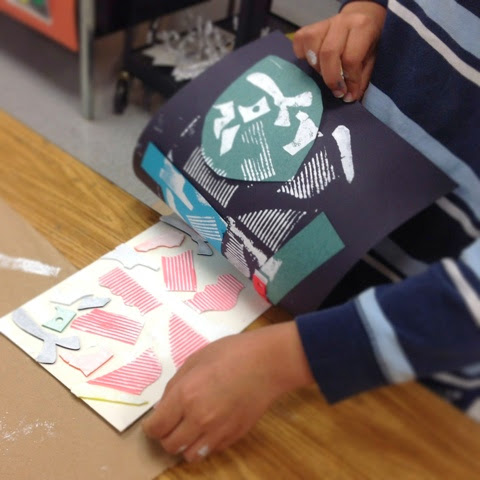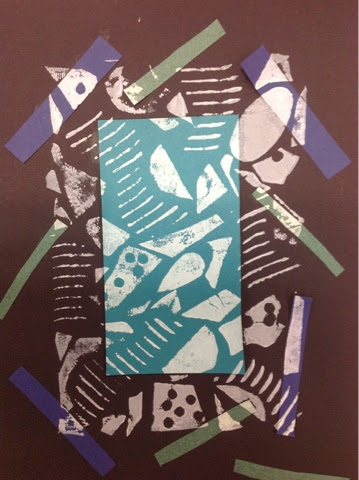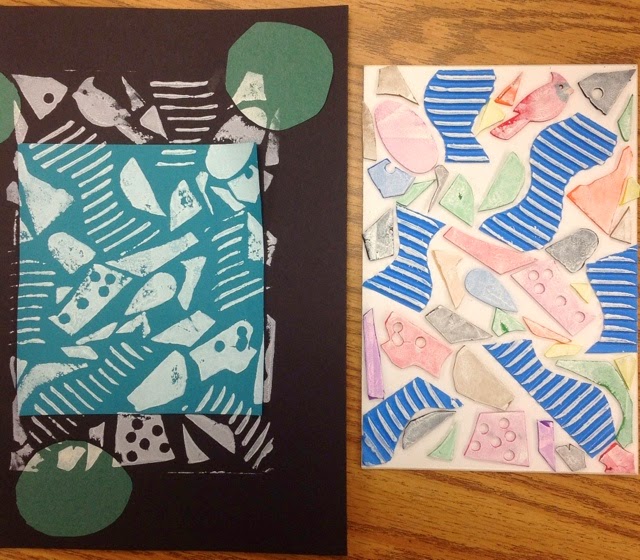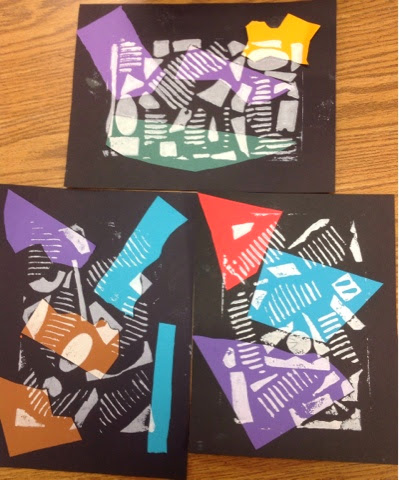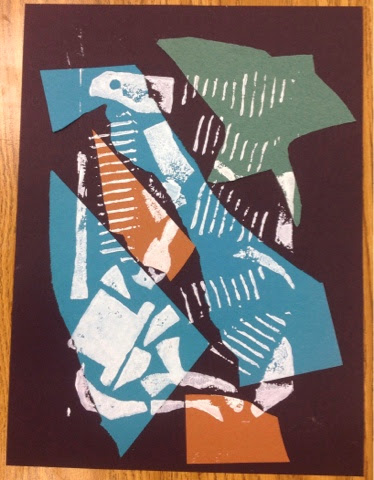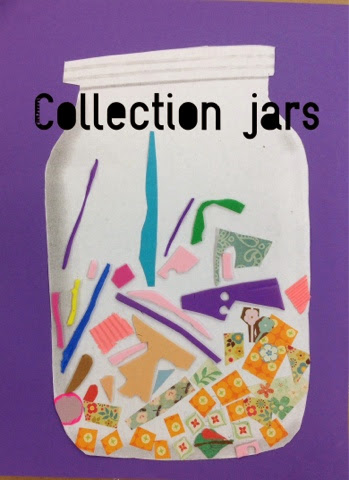
This is the time of year when my students choose their favorite work from the year to show at our year-end art and music extravaganza, Fine Arts Night. For my youngest students, I meet with them one-on-one to make a good selection and help them create a title. When I ask them what they want to call their favorite piece, a few of them have titles ready, some just look at me blankly, and a few say something like "Elsa!" when it is clearly a picture of a city street or something. :) So this planning time together is nice, but
how do I engage everyone else as I make the rounds?
It's also the time of year when we are snowed under with scraps of all kinds. I had seen an image on Pinterest of a collage-y jar filled with beautiful paper scraps, very professionally done, and it stuck with me. The kids love digging through scrap boxes and looking through magazines, so I loaded them up and asked them to find a collection of things that appealed to them because of their shape, color, texture or just because it was an interesting object. They had a ball and it was great cutting/gluing practice. Some classes made their own jars, and a couple of my classes had a sub so I made a shortcut for her and printed out an empty jar for the kids to start with.
There is something fun and playful about this that I really like, not to mention the good techniques practiced and the use of lots of otherwise thrown out materials.
Beginning stages - we started at the bottom and imagined how things would drop into the jar.
I think all these need is a little shot of silver Sharpie on the lids!
